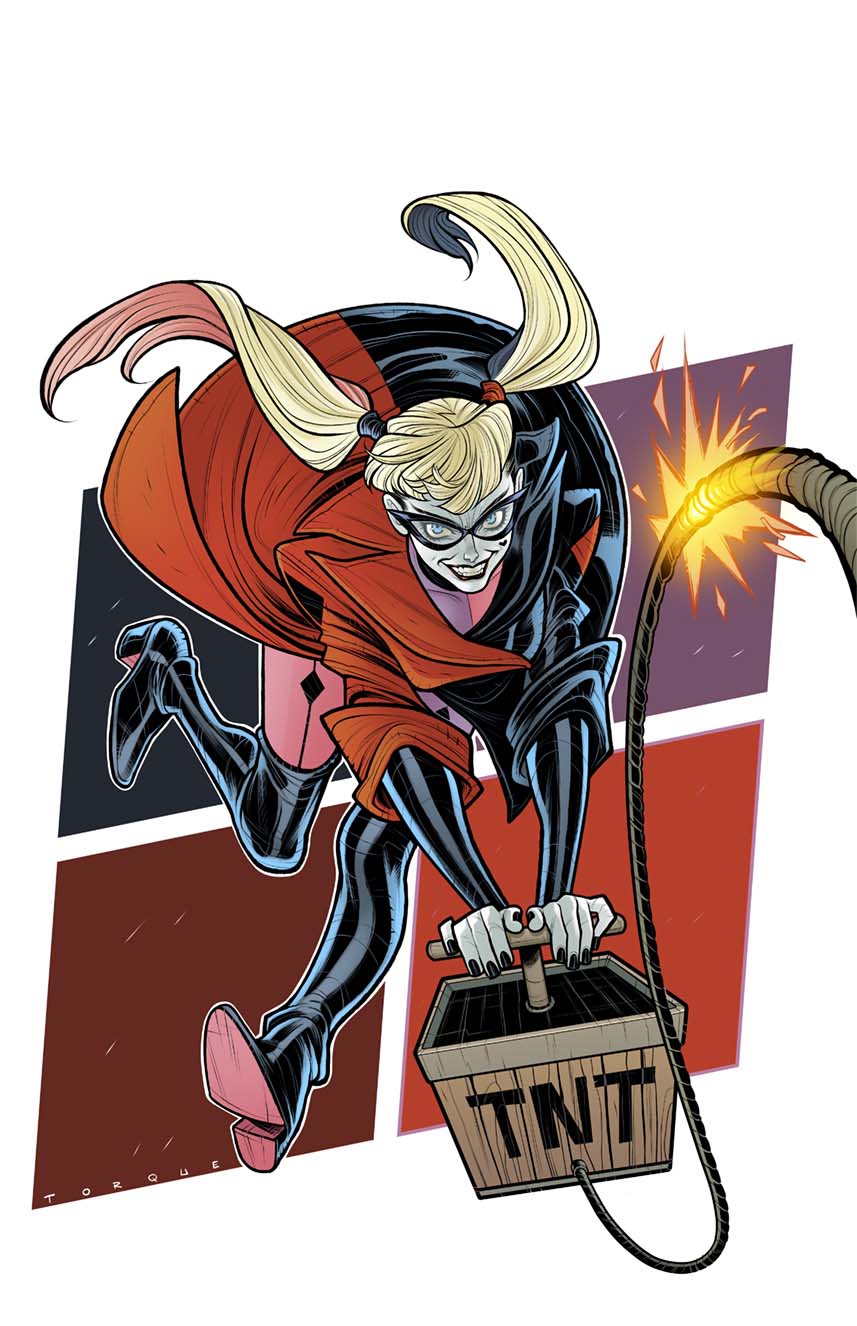The way Chip Zdarsky has incorporated the multiversal Zur-En-Arrh concept into this story has always been problematic. While it started as a revisiting of a concept introduced by Grant Morrison in Batman R.I.P., it quickly lost the plot attempting to integrate the excessive fanservice from the big #900 anniversary issue. Suddenly, not only was it Batman’s secret, hidden alter-ego, but also connected to every iteration of Batman across all Batman media, who also have their own Zur-En-Arrhs. This issue supposedly acts as the climax of that storyline, but mostly pushes the details about how that makes sense aside for a big action set piece. There’s still a small amount of obligatory exposition at the very beginning to contextualize the fight that’s about to happen. Through a brief flashback and villainous monolog, we learn that “our” Zur-En-Arrh has apparently been planning for years to escape into the Failsafe robot. It’s a sharp departure from the way Morrison originally reintroduced the concept back in 2008. I’m not necessarily upset that the canon has changed (I honestly have no idea what is and isn’t canon for DC at this point), but rather that this approach is just so much less interesting. Rather than a manifestation of Bruce’s psyche to compartmentalize his raw id in a clever appropriation of a Silver Age story, this just comes across as a much more straight-forward evil alter-ego. He creates a master plan to escape that takes years to manifest and feels more like the work of your typical villain than something more primal like before. This is before even getting into how making him some sort of eternal constant doesn’t work. The other Batmans never add anything substantive aside from giving the reader something they recognize. The other Zur-En-Arrhs aren’t the only superfluous references included. Batman’s old mentor Lucie Chesson, AKA The Gray Shadow, pops up again after being kidnapped by Joker a couple issues back. Readers might recognize her from Zdarsky’s earlier Batman title, Batman: The Knight. I guess it’s neat to see someone from the first title I reviewed for Batman News, but it’s not really clear why she’s here. Narratively, she could have been just about any hostage, and after saying hi to the audience, she just leaves. It feels like a distraction that only serves as a callback to Zdarsky’s foray into Batman. However, as I said before, the story is eager to move past all of these details to transition into the fight itself. Once it does, it’s a genuinely tense and exciting sequence. At every moment it feels as though Failsafe is right on Batman’s tail with hardly a minute to breathe. The wonderful toys for which Batman is so well known prove to be useless in all but delaying the inevitable. It succeeds in making the reader question “how will the hero possibly get out of this one?” Of course, it feels like a cop out when the answer to that question is eventually all but side-stepped. Jorge Jiménez’s art is stellar as always. Along with Tomeu Morey’s colors, the visuals weave back and forth between anticipation-filled silence and explosive action. The use of shadows create a creeping sense of a predator stalking its prey, and the fight sequences are exhilarating and full of energy. Though, perhaps I should capitalize the word “Predator“, as the imagery will be very recognizable to anyone who has seen the climax to the 1987 film, right down to using mud to mask thermal signature and a tree trunk to crush the monster. There are definitely at least a few shots in homage to 1984’s The Terminator as well. Score: 6/10 Backup: In This Together When I said that most of the details of the Zur-En-Arrh concept were pushed aside in the main story, this is where they were pushed to. The entirety of this backup is devoted to explaining the logic of Zur-En-Arrh’s plan. Written by Zdarsky as well, it’s such a vital element of the primary story that it seems strange to relegate to the backup. In fact, “how does this make sense?” has been my main issue with the arc as a whole, so I’d hoped this would hopefully clarify everything in the eleventh hour, The Usual Suspects style. Except it doesn’t. We get more monologuing about how Zur-En-Arrh plans to use the robot to escape, but most of the time is spent on a fist fight between the primary Zur and the one from the Batman Beyond universe. It feels pointless to just watch him assert how he’s in charge because he’s the strongest in an out-of-nowhere power struggle that changes nothing. I suppose you could argue that it establishes that the other Batmans are also eager to be free, but that seems obvious. The whole sequence is also fairly visually monotonous. The neon gradient background is interesting at first, but becomes boring over time with no alteration. Even Dustin Nguyen’s art feels poorly utilized. His usual stylization mixes strangely with the more realistic direction in some of the panels, resulting in a few distorted proportions. It might be easier to look past if, again, there was anything to look at but flat images of the Zurs against an empty void. Score: 4.5/10 Recommended If You want to see Batman go toe-to-toe against an unstoppable robot (again) The Zur-En-Arrh master plan has been keeping you interested You’re excited for even more references Overall Batman #141 never quite makes Zur-En-Arrh work as an antagonist, but if you’re willing to ignore that and just enjoy an exciting chase sequence between Batman and a killer robot, it can be a lot of fun. As an action set piece, Jimenez’ art does a lot of the heavy lifting to make the spectacle work, even if you never quite escape the narrative problems underlying everything going on. Overall score: 5.5/10 DISCLAIMER: DC Comics provided Batman News with a copy of this comic for the purpose of this review. COMMENTS
Source link









